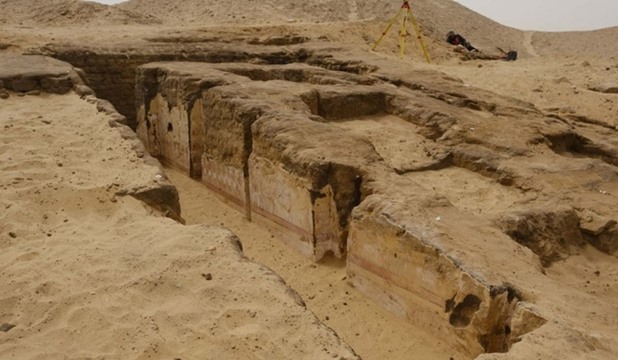Old Kingdom Mastaba Discovered in Dahshur, Egypt
Wednesday, March 27, 2024

Egyptian-German archaeological mission affiliated with the German Archaeological Institute, headed by Dr. Stefan Seidlmayer, succeeded in uncovering a mastaba dating back to the Old Kingdom era during its work in the Dahshur archaeological area.
Dr. Hisham El-Leithy, Acting Secretary-General of the Supreme Council of Antiquities and Head of the Antiquities Preservation and Recording Sector at the Supreme Council of Antiquities, explained the importance of this discovery as this mastaba is part of the large cemetery of Dahshur residents during the Old Kingdom, which was discovered in 2002 in cooperation with the Free University of Berlin.
Dr. Hisham El-Leithy added that the importance of the mastaba also lies in its wonderful inscriptions and scenes that represent scenes from daily life activities such as grain threshing, ships sailing on the Nile River, the market and offering presenters, which is rare in Dahshur mastabas.
For his part, Dr. Stefan Seidlmayer, former director of the German Archaeological Institute and head of the mission, indicated that the mastaba is built of mudbrick and belongs to a person named "Seneb-Neb-Af" and his wife "Idet", and dates back to the end of the Fifth Dynasty and the beginning of the Sixth Dynasty (around 2300 BC).
He pointed out that through the inscriptions of the tomb, it became clear that its owner held several positions in the royal palace in the administration of tenants (Khentiu-She), and his wife held the titles of Priestess of Hathor and Lady of the Sycamore.
He stressed that the mission will continue its excavations at the site in an attempt to search for more secrets of this area, adding that cleaning and documentation work will be carried out on the tomb and its inscriptions during the coming period.
He pointed out what the mission has done at the site since it began its work in 1976.
At first, it focused its excavations on the pyramids of King Sneferu from the Old Kingdom and King Amenemhat III from the Middle Kingdom.
However, its excavations have recently focused on the tombs of the great statesmen, priests, and administrators who lived during that period.
